This reporting is the result of a collaboration between The Straits Times and Southeast Asia Globe.
For decades, people across South-east Asia have been hunting wild animals for food. But commercial pressures and cheaper snaring methods are causing the region’s forests to be emptied faster than they can be replenished—with repercussions for human and forest health.
VIETNAM AND CAMBODIA—Local policemen had seized them from a restaurant and taken them to Save Vietnam’s Wildlife’s facility located within Cuc Phuong National Park, about a two-hour drive from Hanoi.
“The restaurant bought them from people who caught them from the forest,” said Mr Tran Van Truong, who as captive coordinator is in charge of the facility’s operations. “They are a bit stressed now, but they seem okay otherwise. We can probably release them back into the wild after a few days.”
Not all of man’s wild quarry are as lucky.
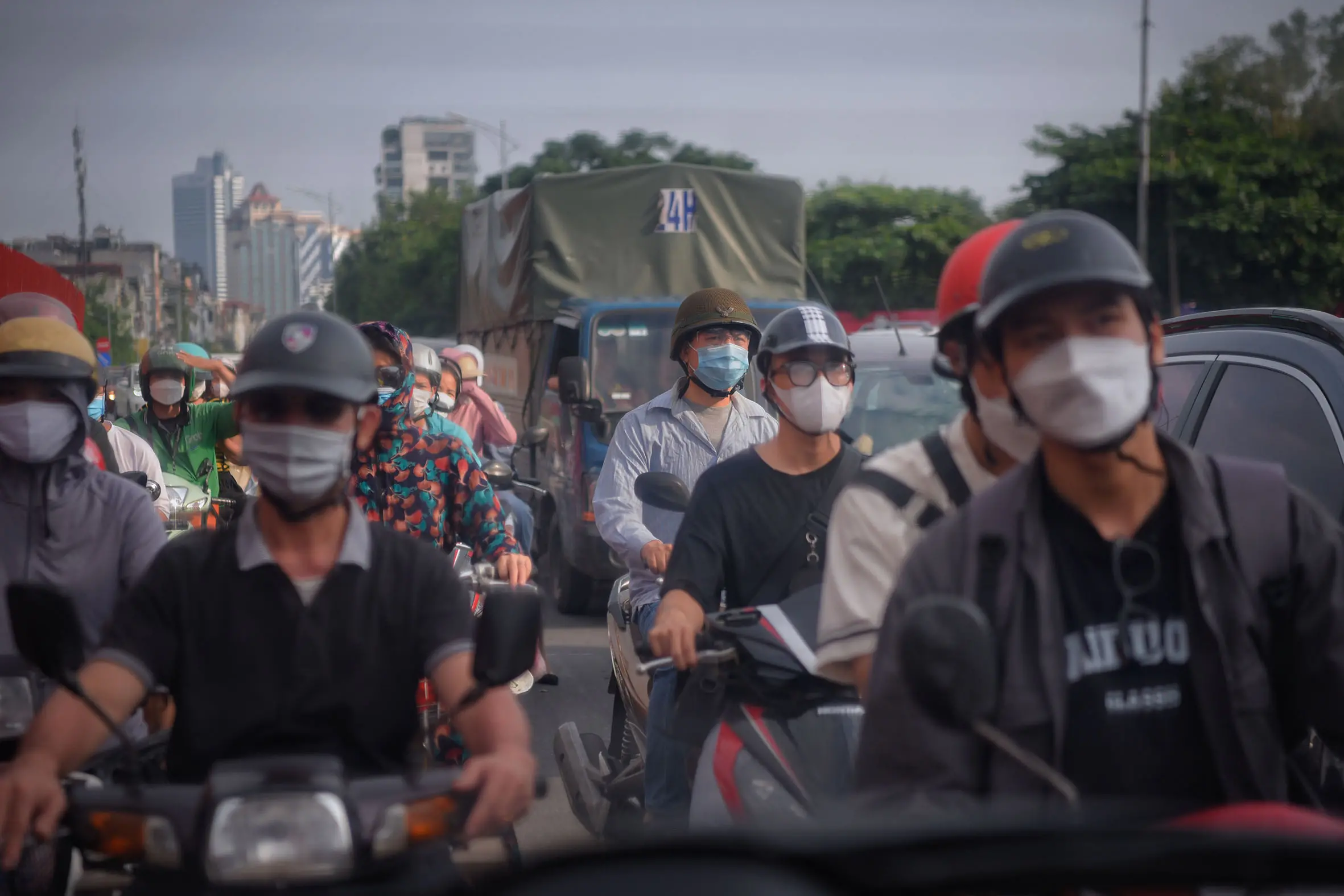
Trapping wild animals for bushmeat may be illegal in Vietnam, but the practice is still widespread in the country. In other parts of South-east Asia too, the Covid-19 pandemic and its likely origins in the wildlife trade has had nary an impact on the region’s appetite for wild meat.
Wild animals are still being taken from the forests in large numbers, to be eaten or kept as pets, and we discovered how voracious appetites for them were still during visits to Vietnam and Cambodia in September.
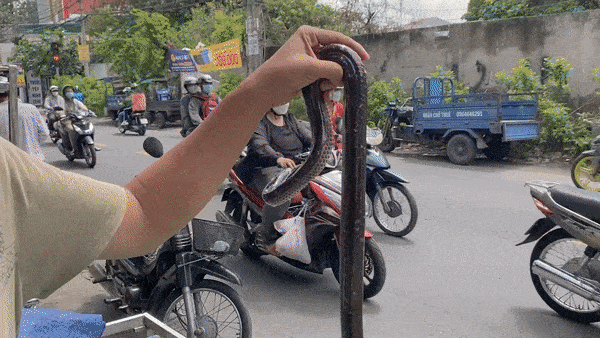
In Vietnam’s Ho Chi Minh City, for instance, we saw monkeys, snakes and birds being sold at markets. Wild porcupine and deer were on restaurant menus in Vietnam’s Central Highlands, and so were wild birds — although we had to order these over the phone and pre-pay to have them delivered.
In northern Cambodia, we learnt the extent of the snaring problem and saw how cheaper traps that were easier to set were causing the forests to be emptied out so quickly that an eerie hush has fallen over landscapes once raucous with the cackling of hornbills and the howls of gibbons.
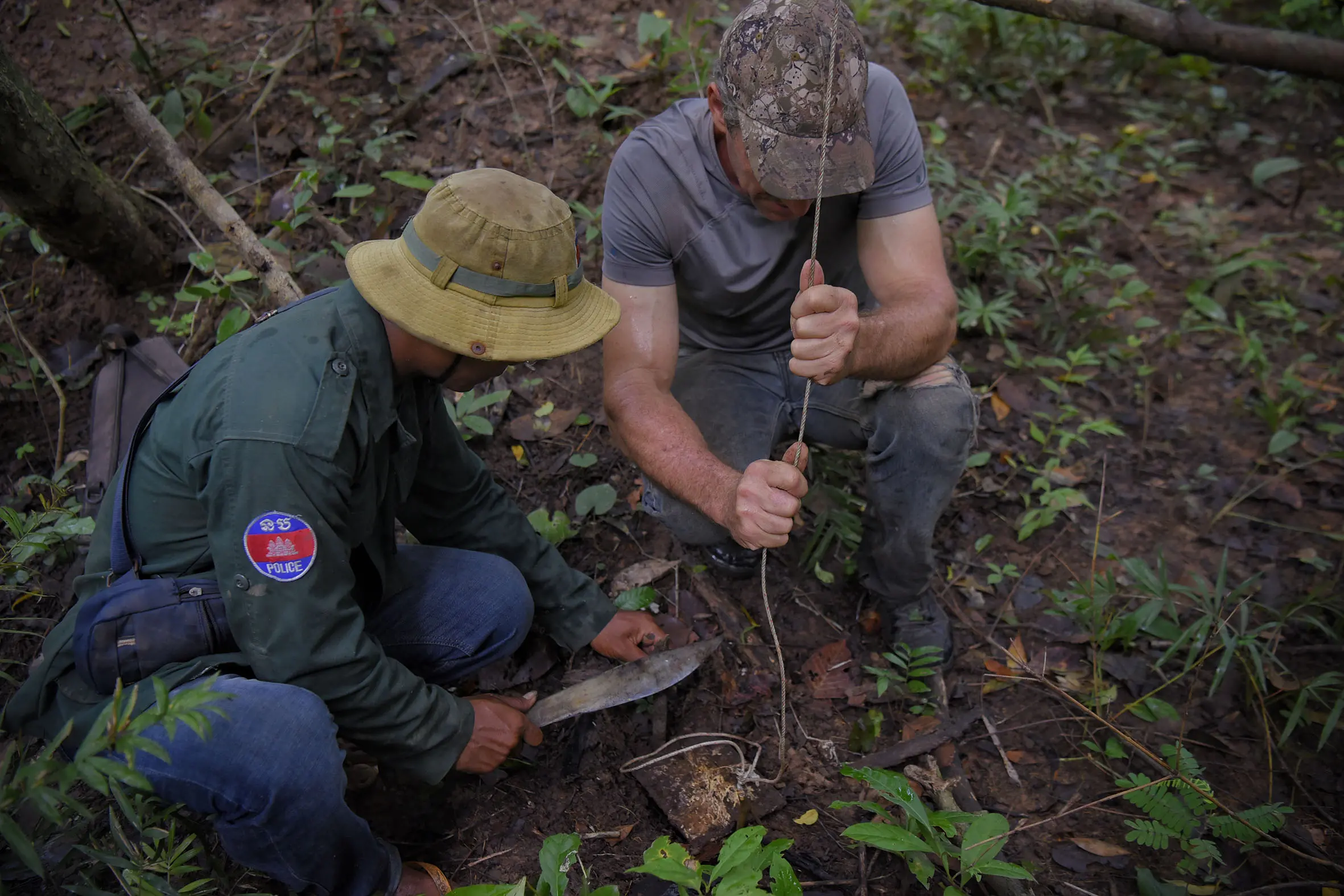
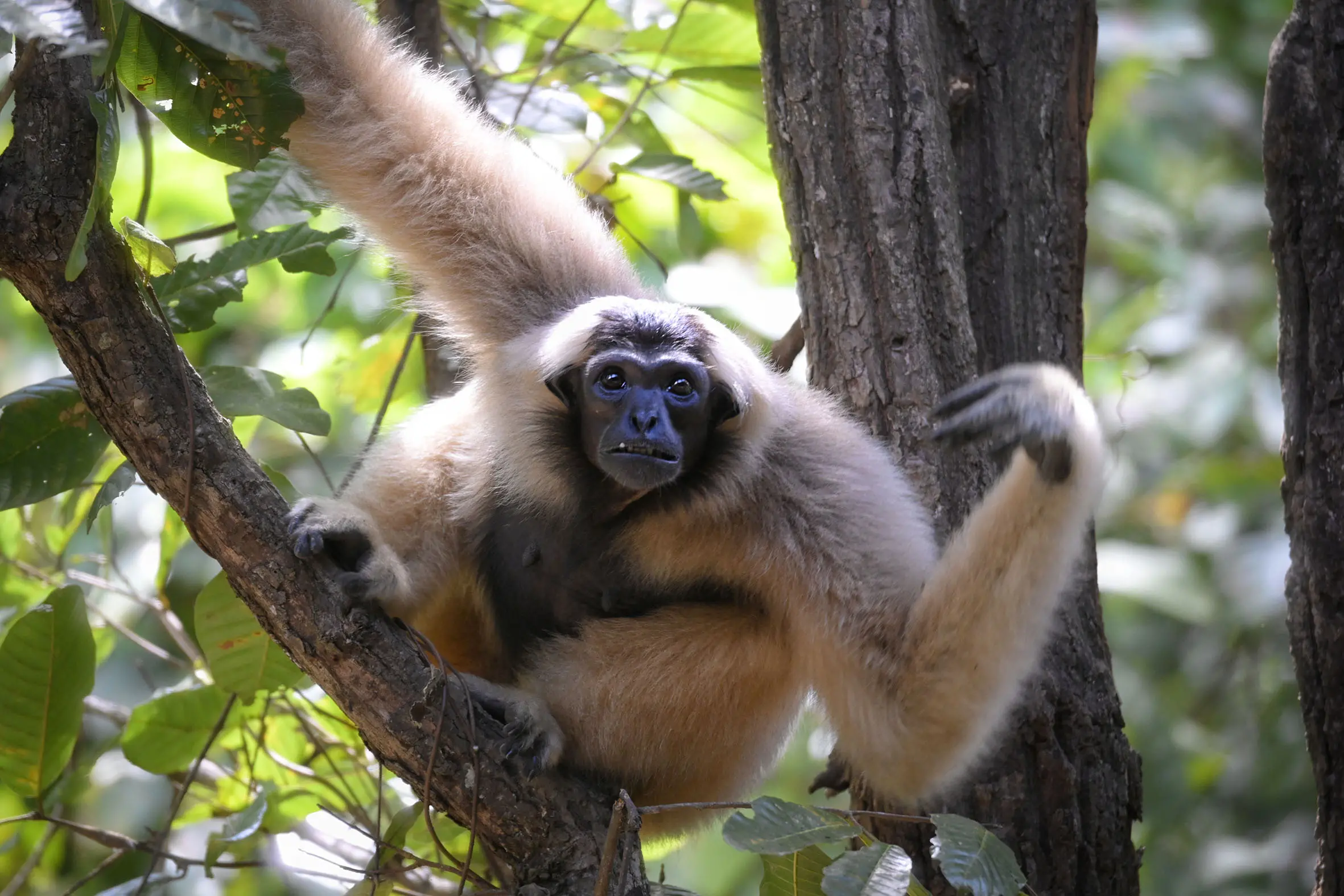
Subsistence hunting is an age-old tradition, especially in many developing regions of the world where communities rely on nature’s bounty to feed and clothe them. Growing up in a village near the forest in Vietnam’s Ninh Binh province, Mr Tran said hunting wild animals for food was common among his neighbours.
But problems arise when people upset the scales that nature has carefully calibrated over the millennia; scales on which every single animal of the forest — predator, prey and scavenger — stands in the fine balance that keeps the ecosystem alive.
“When locals hunt for themselves, only a limited number of animals are taken from the forest,” Mr Tran said. “But when commercial reasons come in, when people want to earn money by selling the animals to other cities or countries, they take more animals to sell to others.”
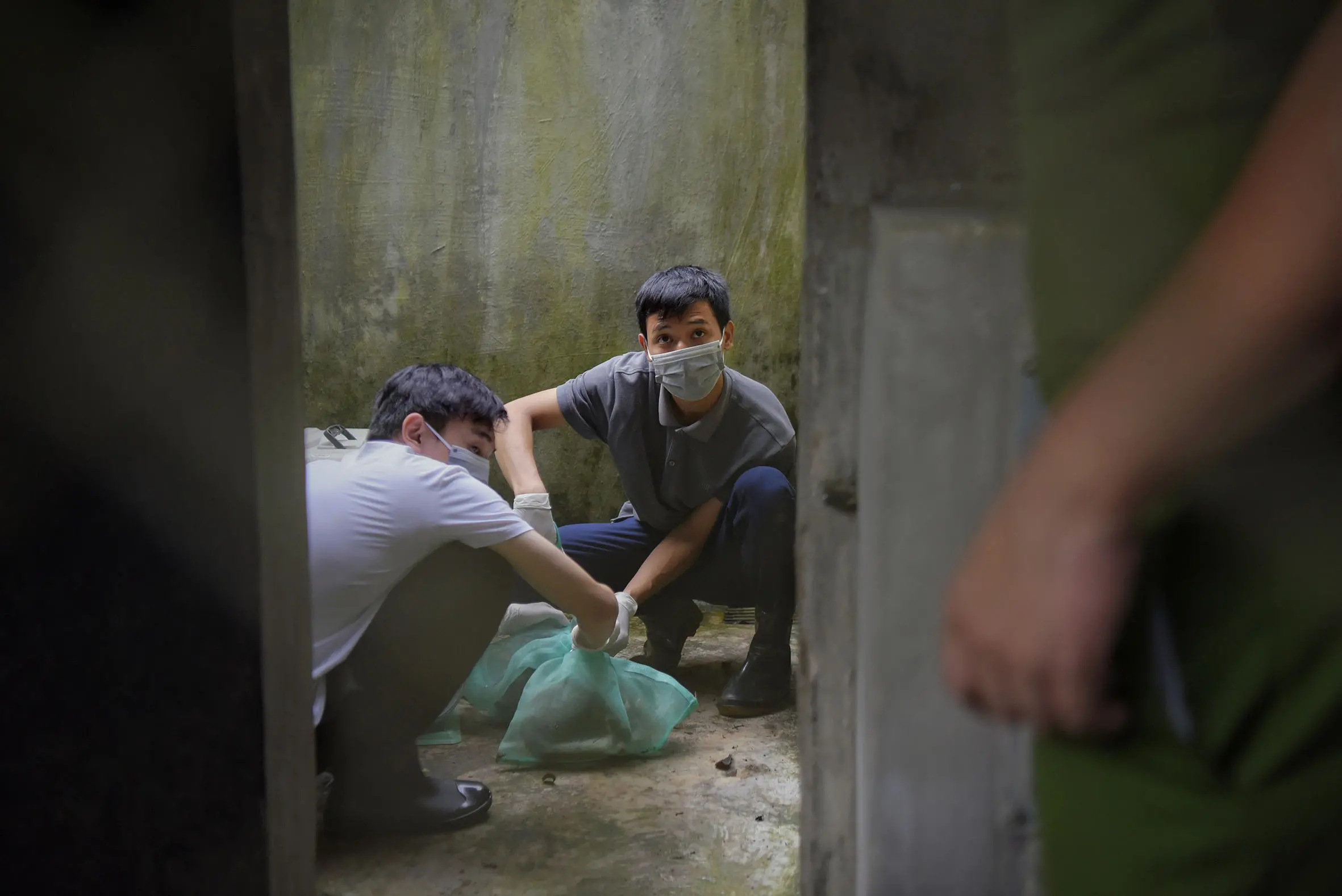
One of his most memorable rescues, in 2017, illustrated the scale of the problem. It was barely a week after he joined Save Vietnam’s Wildlife that he went on a rescue mission to save more than 100 pangolins — still the largest haul to date. These globally critically endangered mammals are hunted for their scales, which are used in traditional medicine in China and other parts of Asia.
A 2014 report by the Centre for International Forestry Research also noted that commercial poaching to supply regional markets and beyond with bushmeat and traditional medicinal products had exerted pressure on wildlife, especially mammals, and reduced the density of wildlife in many South-east Asian regions.
Mr Tran added: “When animals are hunted in such large numbers, it makes the forest go silent.”
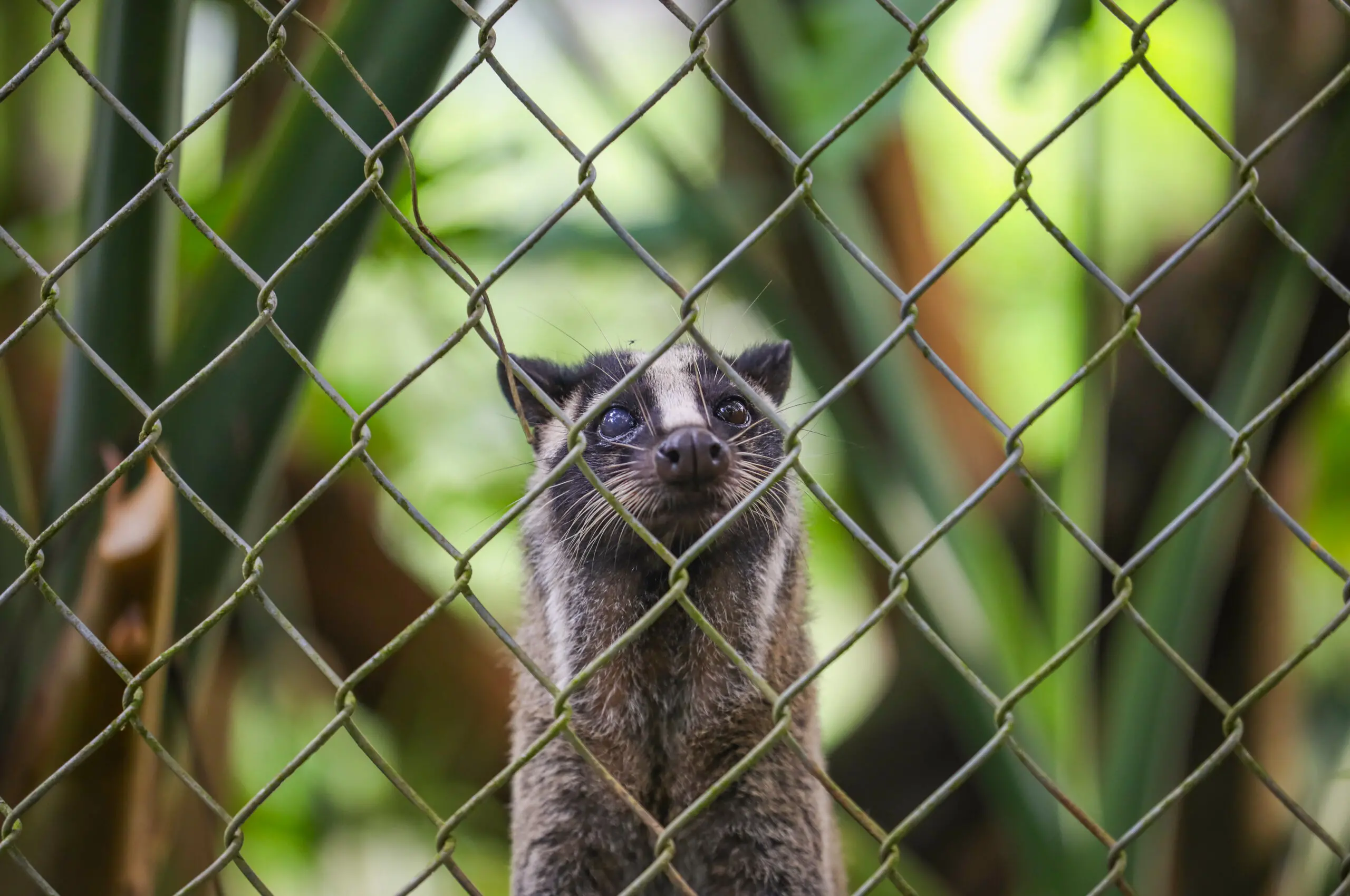
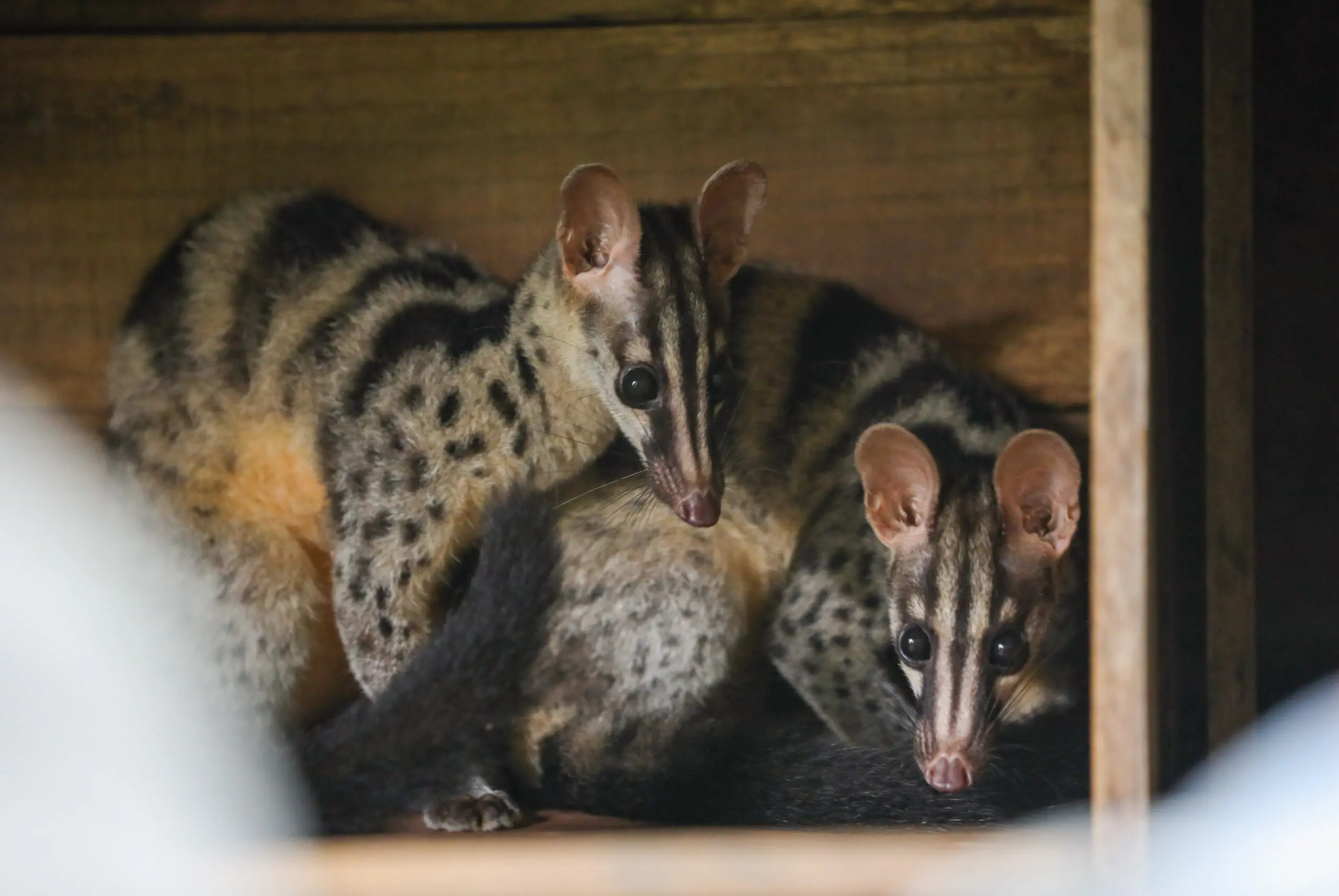
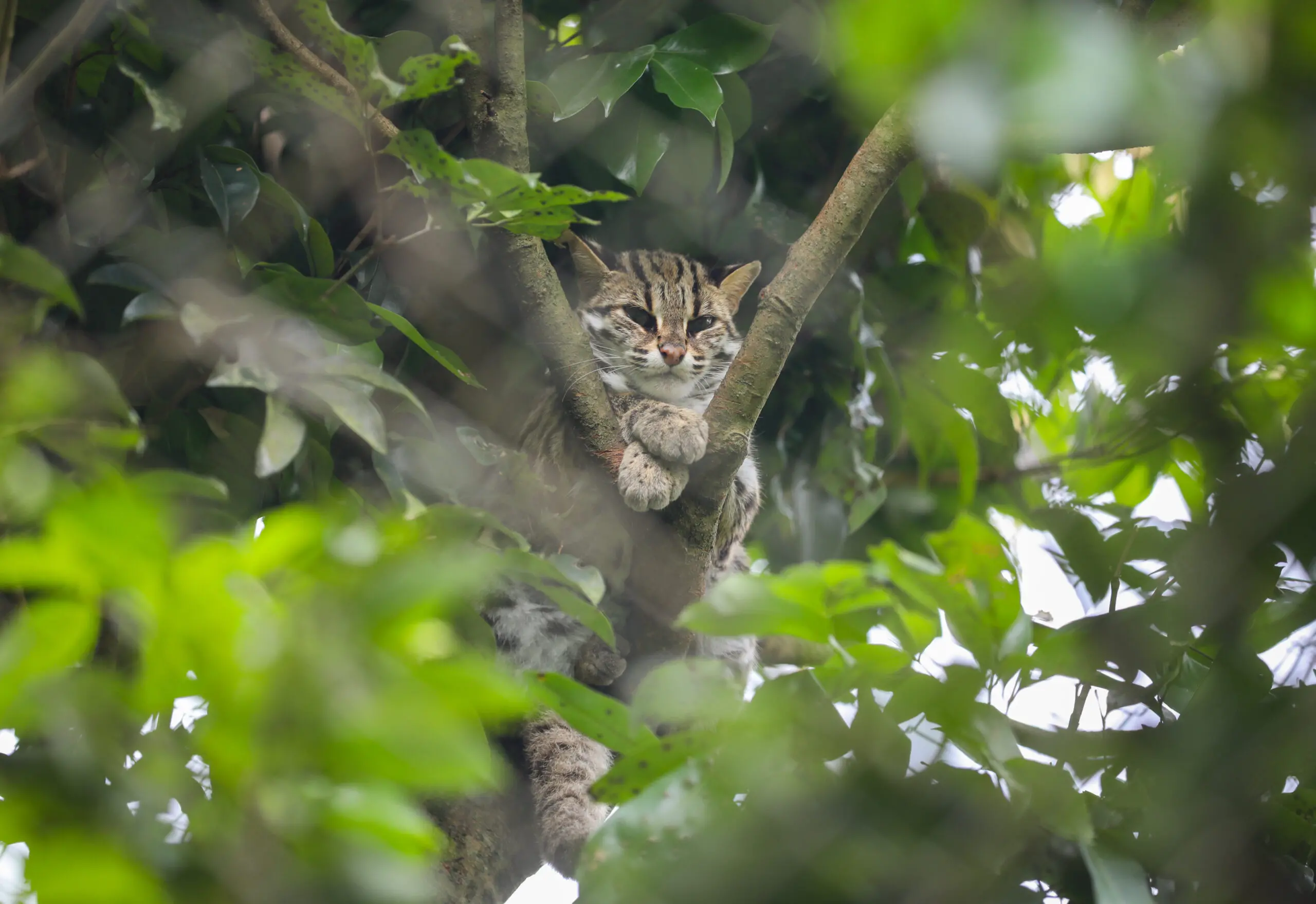
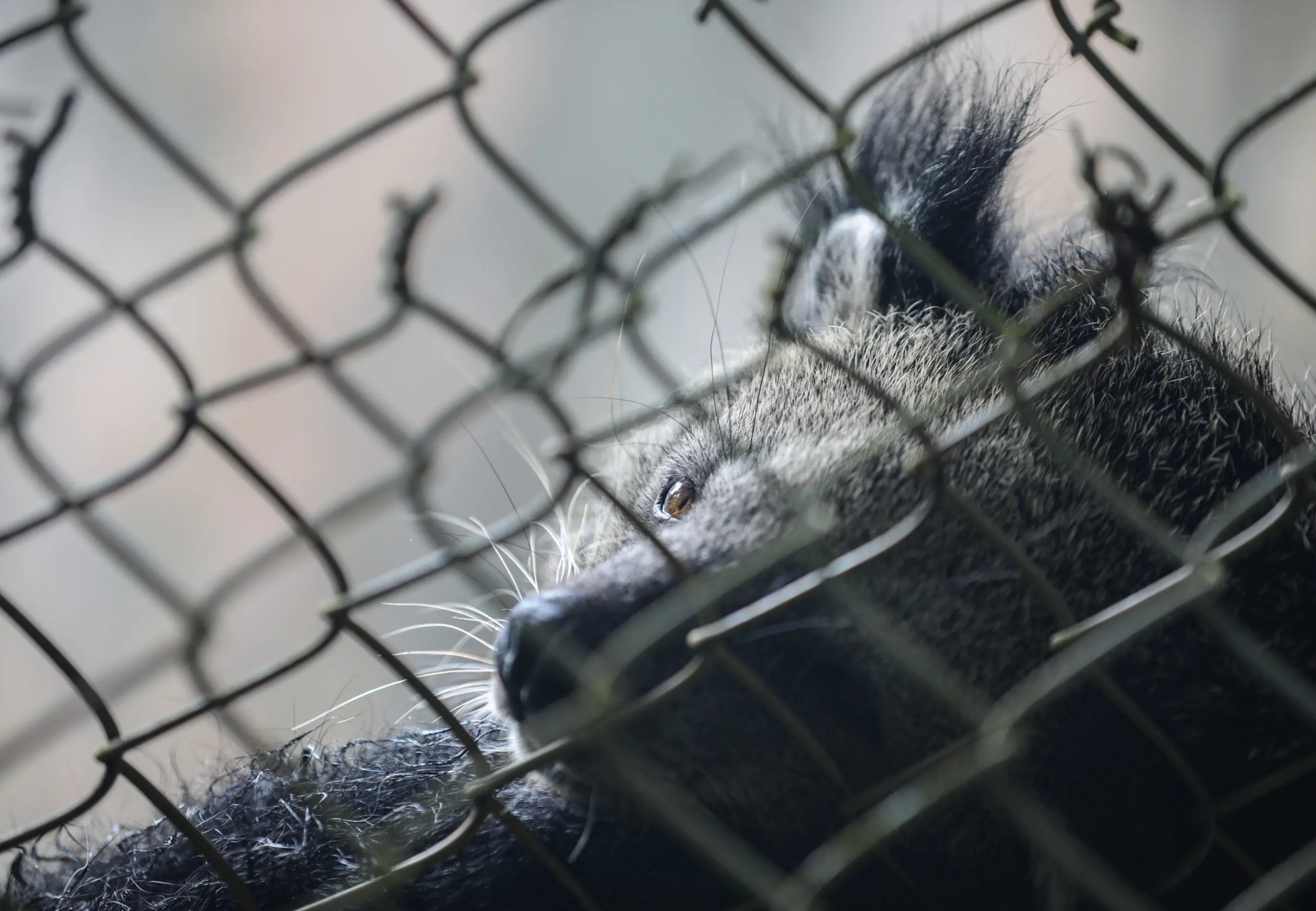
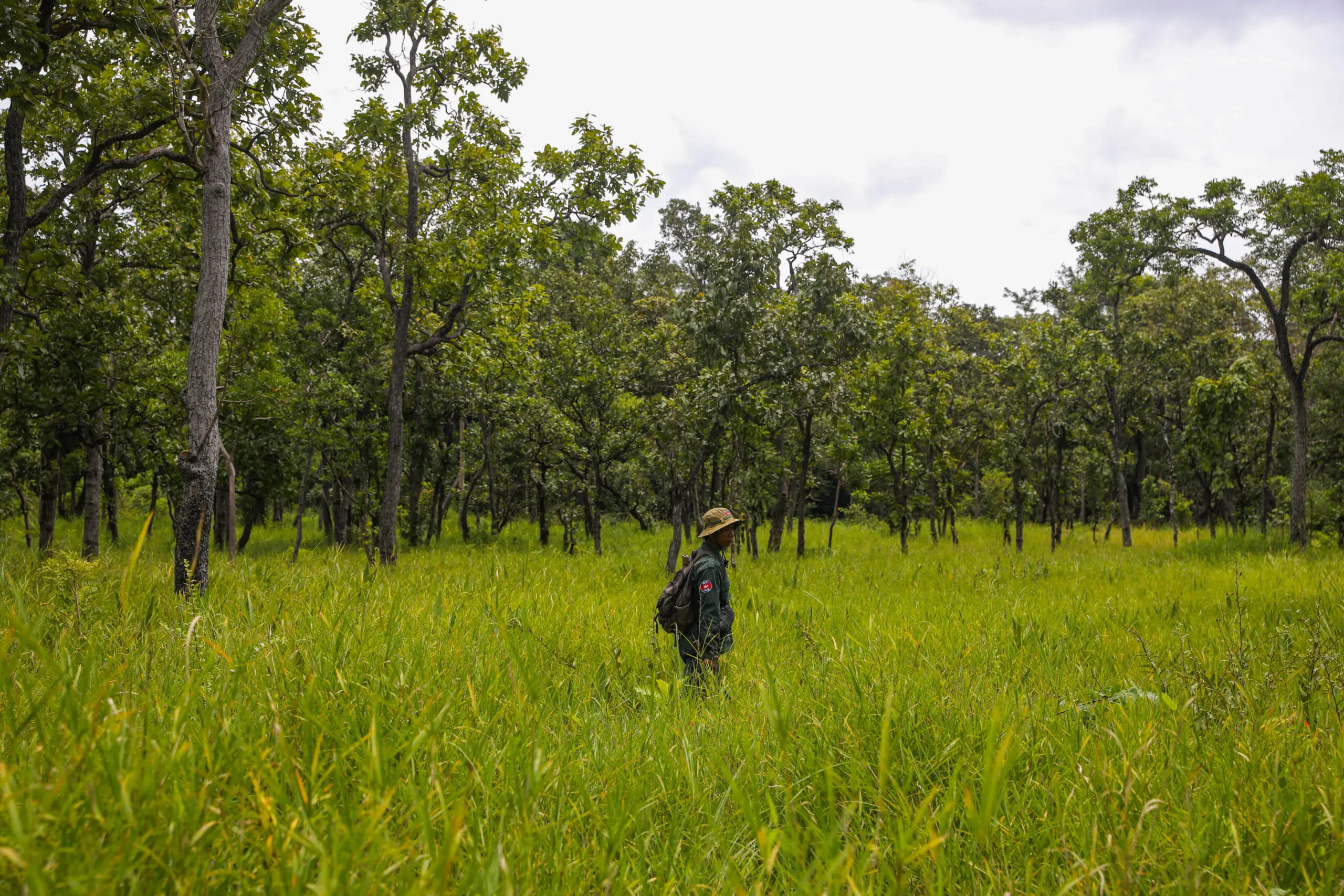
Experts have warned that the continued trade in wild animals, endangered or not, increases the risk of diseases jumping from animal to human populations. And tropical forests impoverished of seed dispersers such as birds and monkeys could make these carbon-storing habitats less of an ally in humanity’s bid to tackle climate change.
Recipe for a pandemic
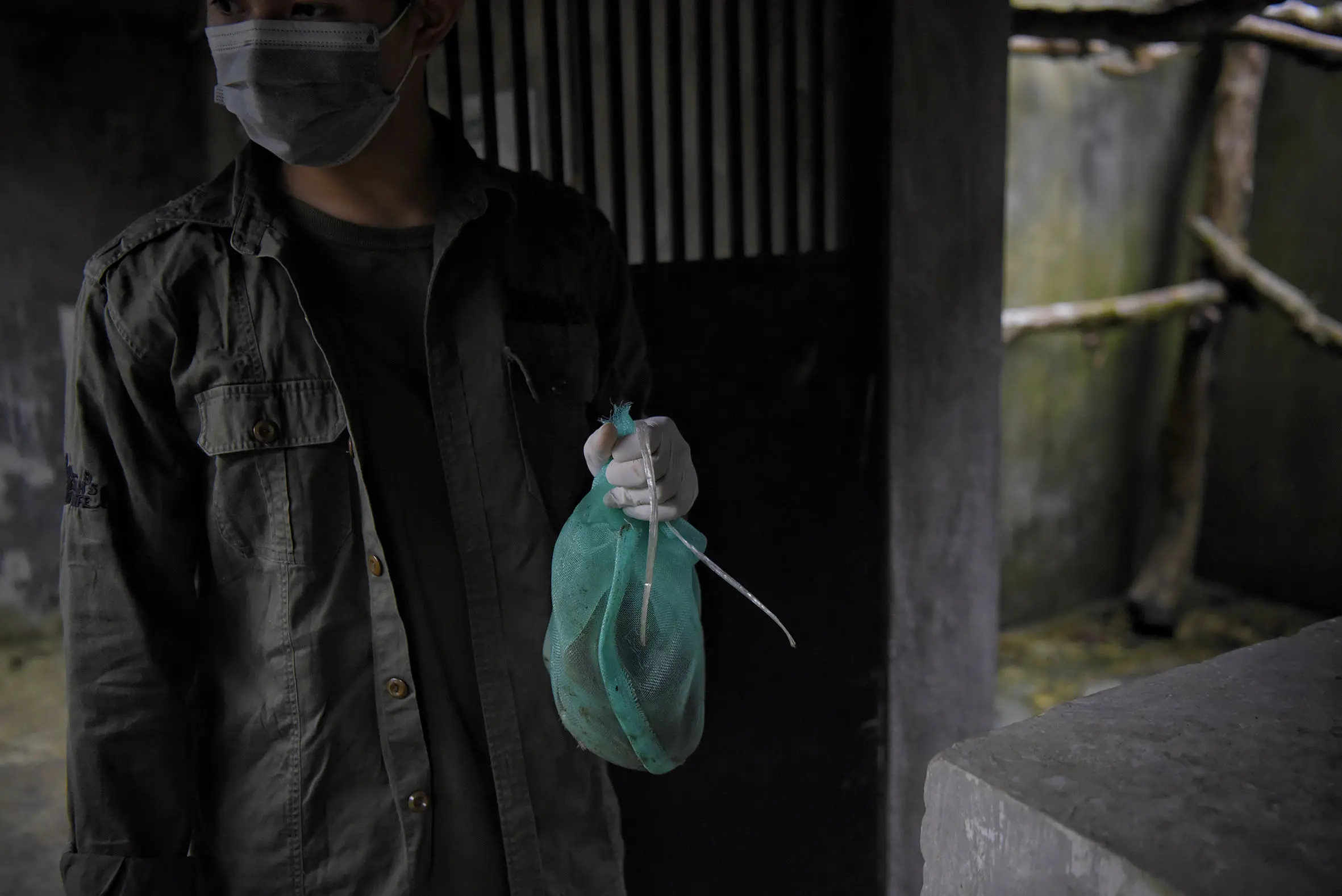
Wearing gloves and a surgical mask, Save Vietnam’s Wildlife veterinarian Tran Nam Trieu examined the ferret badgers to ensure they had no other injuries.
Many other wild animals that come through the centre’s gates have bloody wounds, and sometimes missing limbs, because of the traps. Thankfully, the four ferret badgers seemed unhurt, though stressed.
They would be examined more thoroughly when calmer, Mr Tran, the veterinarian, told us. In the meantime, they would also spend at least 30 days in quarantine, each in its own holding cell, to ensure that they did not spread any disease to the other animals in the facility, he added.
The rescue centre takes other measures to reduce the spread of diseases among the animals, and between them and humans. For example, we had to step into buckets of disinfectant periodically while exploring the facility. We also had to don centre-issued boots before entering certain parts of the facility, such as where the quarantined animals were kept.
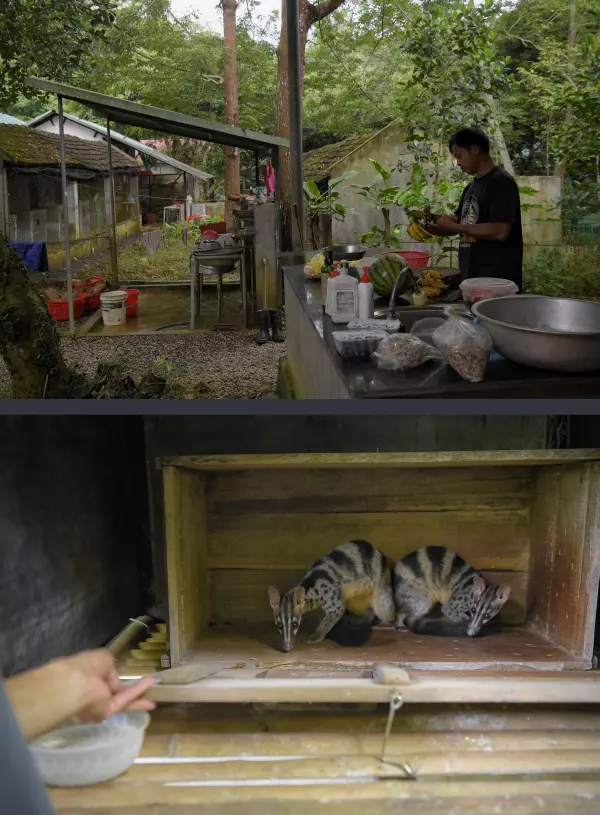
That experience was a stark contrast to the way wild animals were handled in other parts of South-east Asia.
At markets in Ho Chi Minh City where wildlife is sold, many animals were packed like sardines into small cages and handled by sellers who wore no gloves or face masks.
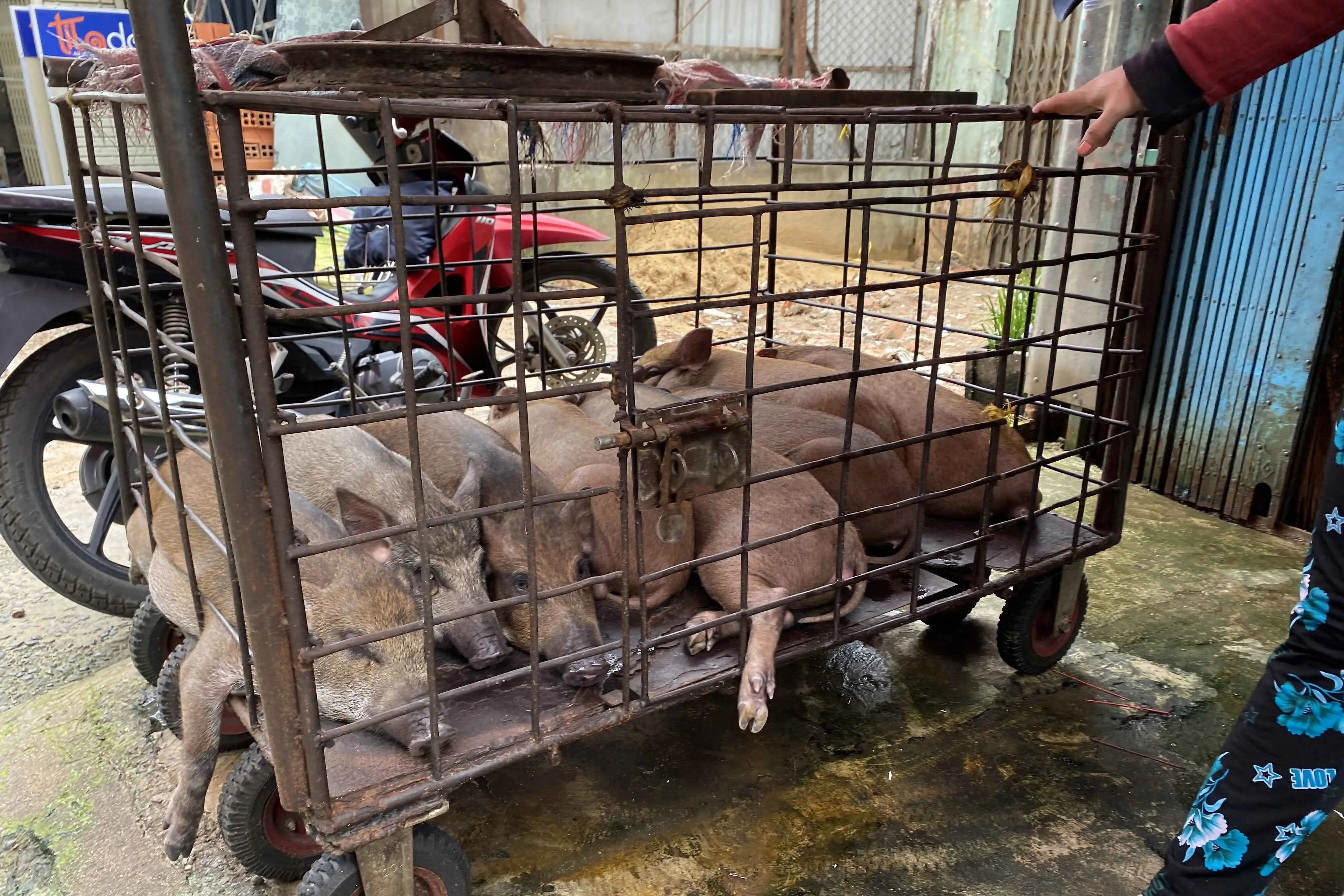
Ms Debby Ng, a wildlife disease ecologist at the National University of Singapore’s (NUS) Centre for Nature-based Climate Solutions, said: “Wildlife markets are an ideal landscape for zoonotic disease transmission because they have a combination of diverse wildlife species, housed in high densities, in poor biosafety conditions.”
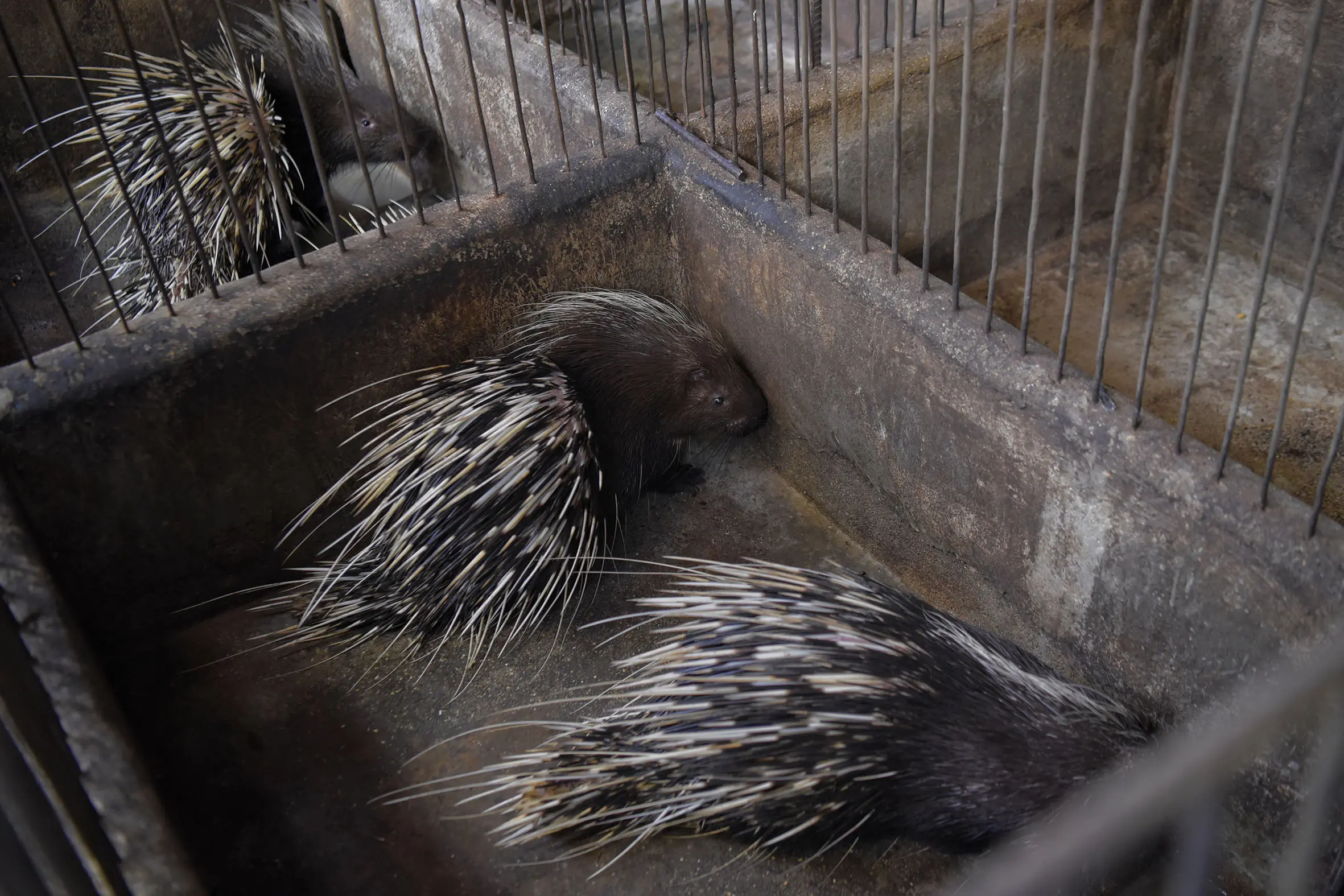
At farms in Buon Ma Thuot, Vietnam’s coffee capital in the Central Highlands, we saw porcupines being reared for their meat, and civets, for coffee production.
Ca phe chon, or coffee made with beans fed to and passed by civets, can fetch a pretty penny in many parts of the world despite its dubious origins. For example, one farm we visited was selling a kilogram of ca phe chon for 4 million Vietnamese dong (S$240), compared with the 200,000 dong price tag of every kilogram of regular coffee.
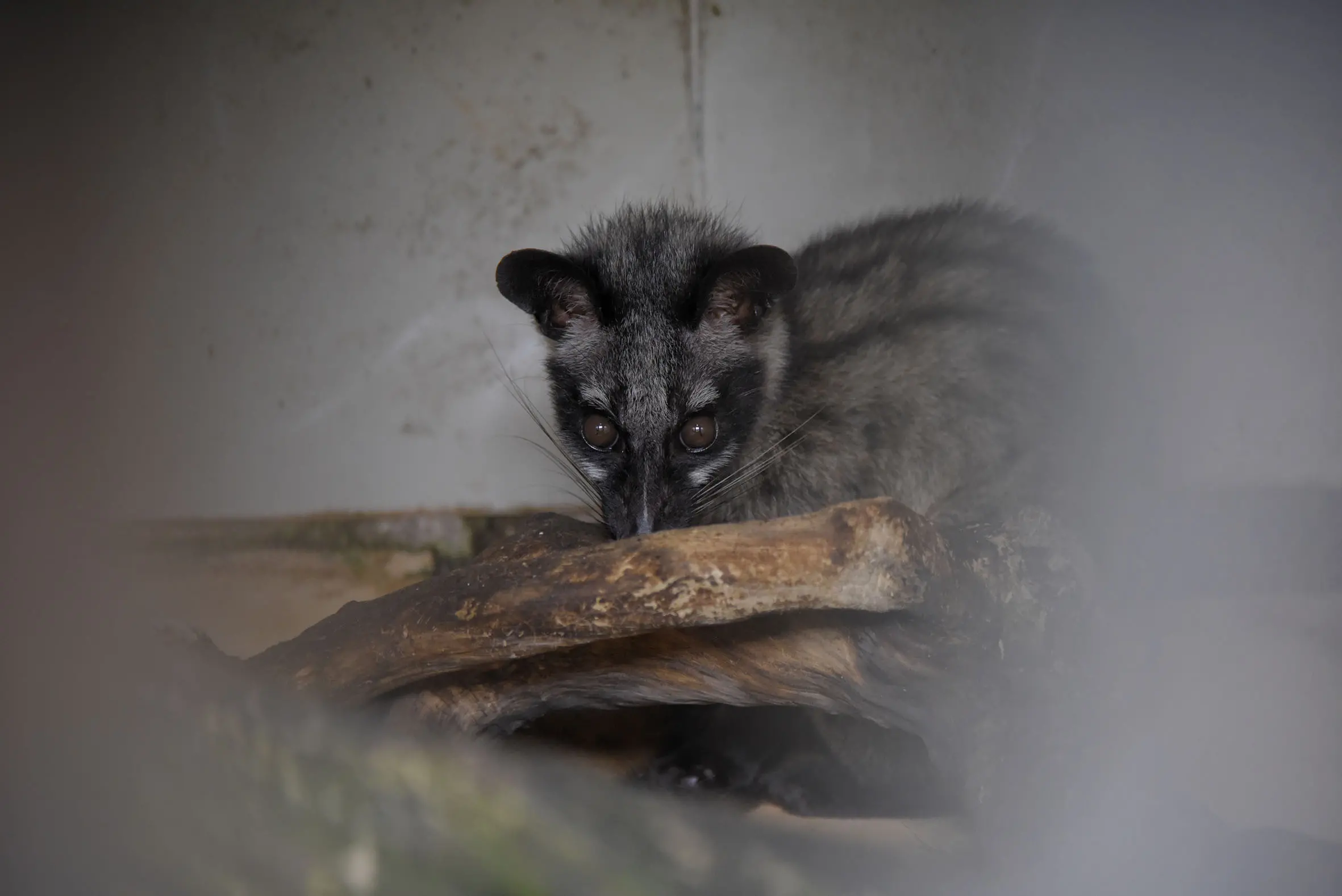

The owner of that farm said he purchased his civets from a seller, but that the animals had been reared in captivity and were not from the forests. His porcupines, too, were mostly farmed — with the exception of the original pair that had been caught from the wild.
He declined to show us his civets, although we did see the about 50 porcupines he kept in concrete cells housed in a shed with little ventilation. A young civet, apparently rejected by its mother at birth, was suspended in a cage over the porcupines, its tail bloody and looking like it had been gnawed.
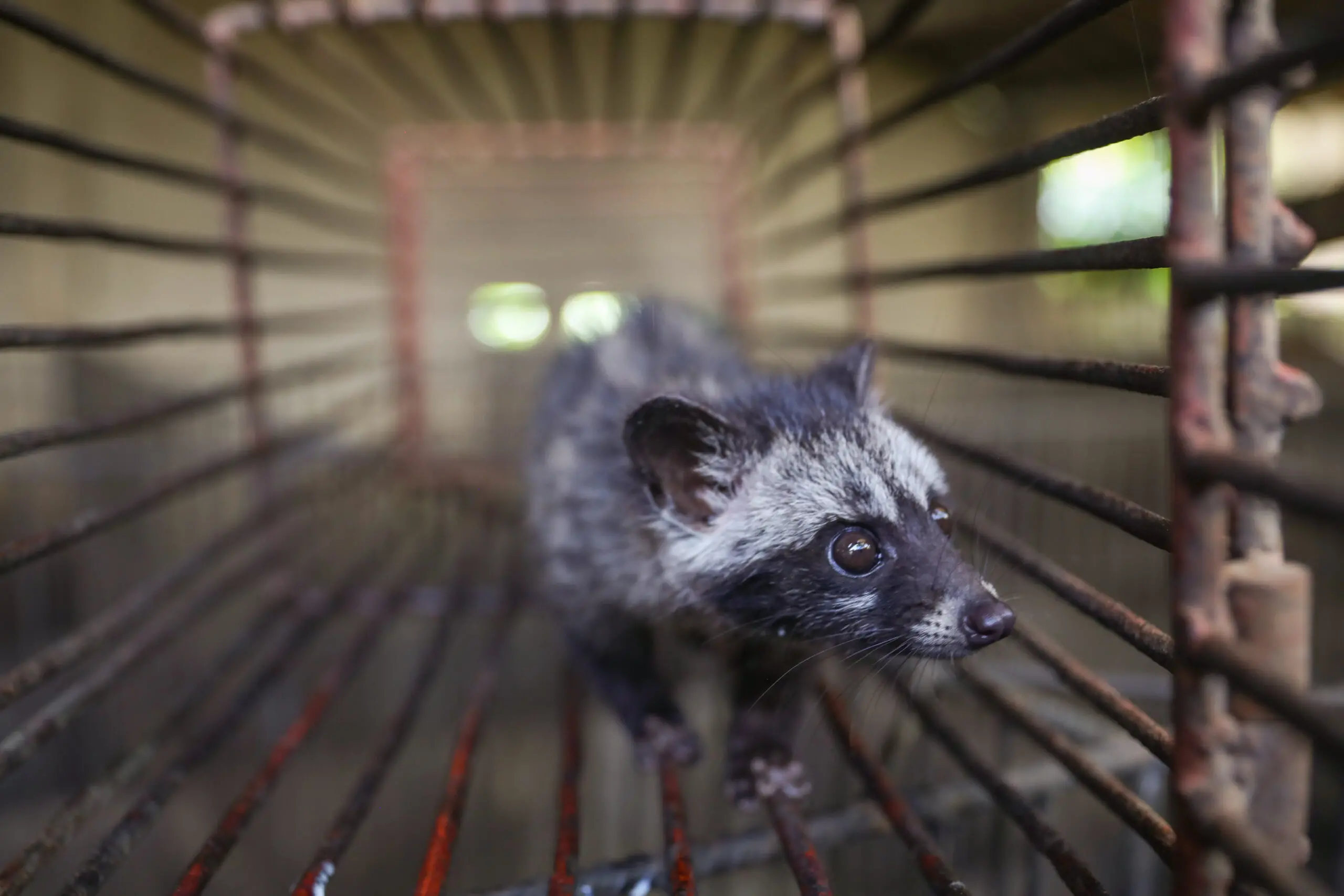
Was he afraid of disease being passed from animals to humans, we asked the farm owner through our Vietnamese translator. “No,” he told her. “If any of them had Covid-19, I would be willing to cull them all.”
A looming threat
Is the consumption of farmed animals, such as pigs, cows and chickens, safer than eating wild animal meat?
The Institute of Food Technologists, an international, non-profit scientific society of professionals working in food science, had in a 2020 report noted that wild animals are usually exposed to parasites, viruses, and other hazards not found in farmed animals, which are reared in environments that are relatively more controlled.
Professor William Chen, director of the Nanyang Technological University’s (NTU) Food Science and Technology Programme, said animals that are usually bred for consumption are kept in farms that have strict hygiene standards and veterinary services.
At the very least, he said, such farms ensure their animals are vaccinated and have adequate nutrition. Biosecurity measures and animal welfare standards also tend to be more established in such farms.
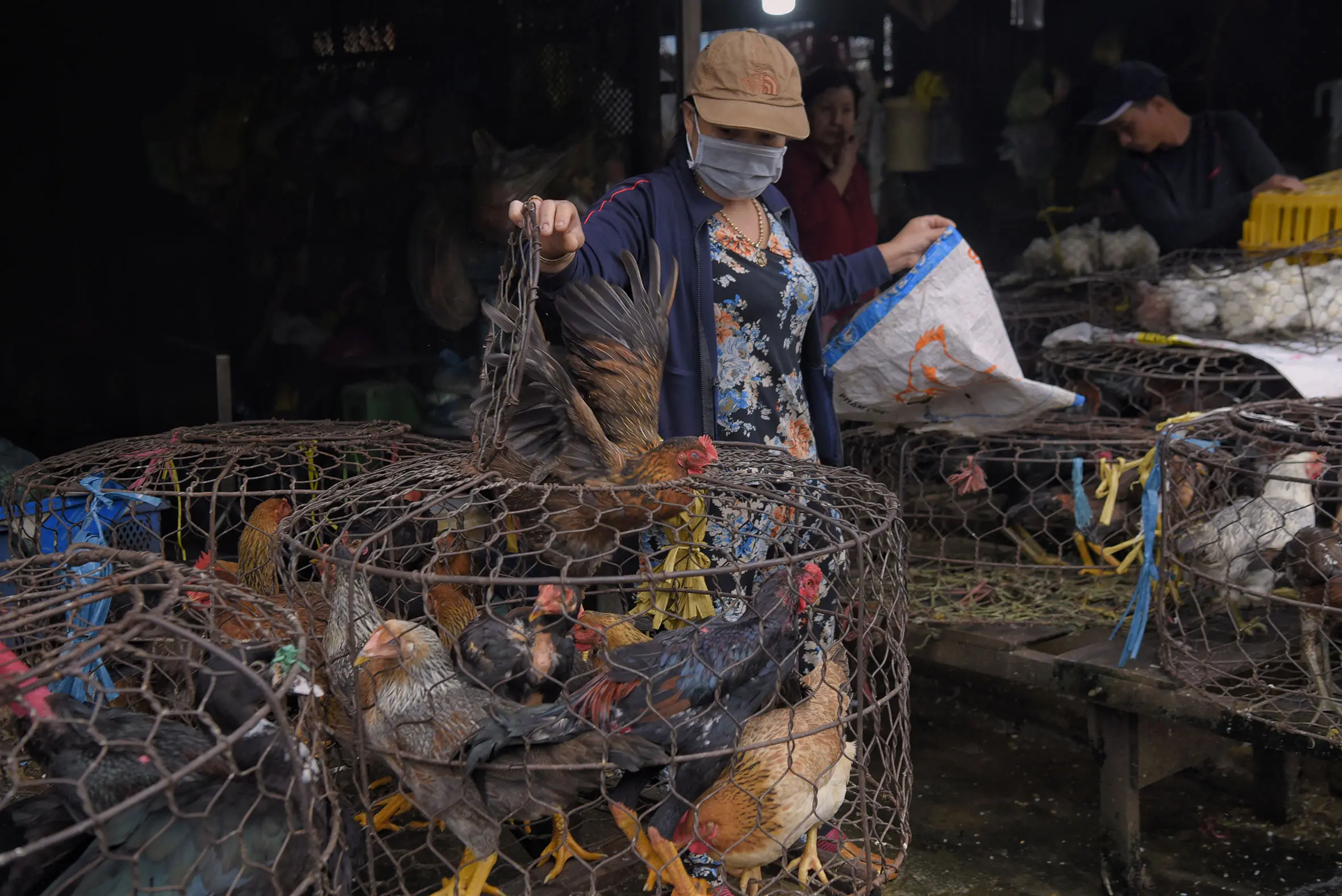
“With good inspection measures in place, zoonotic spillover in farms should be low, although a small risk still remains,” said Prof Chen, who is also an adviser to the World Health Organisation.
Outbreaks sometimes still occur. Earlier in October, for example, the Singapore Food Agency recalled a batch of eggs imported from a farm in Malaysia due to the presence of a bacterium which causes food poisoning. But such outbreaks are caused by known pathogens that can be controlled by available drugs or antibiotics, unlike Covid-19 which was caused by a novel coronavirus, Prof Chen added.
Ms Ng, the wildlife disease ecologist, said it is not just the direct consumption of wildlife that could spark pathogen transmission between animals and humans. Other human activities, such as the destruction of wildlife habitats for development, can also increase interactions between animals and humans.
“Rapid urbanisation and subsequent environmental contamination from the influx of people, industry, and infrastructure directly impact how wildlife moves and survives,” said Ms Ng.
In 2014, she started the Himalayan Mutt Project, which aimed to vaccinate and neuter free-roaming domestic dogs in Nepal that were attacking endangered animals, such as the red panda, and threatening humans and wildlife with diseases such as rabies and distemper.
Ms Ng said that in Nepal, roads opened up access to farming on landscapes that were once habitat for wildlife. Domestic dogs, which came with humans, roamed the area freely, coming into contact with both wild animals and humans and exposing each to new diseases.
This issue is not unique to South-east Asia, she said. In Australia, flying foxes, a type of bat, were driven into farmland when the forests of flowering and fruiting trees they depended on were cleared. This resulted in the emergence of the Hendra virus, which killed people and horses. In North America and Europe, land use changes and hunting altered the movement of deer and the ticks that fed on them, leading to outbreaks of Lyme disease, which can be fatal in humans.
Mr Pablo Sinovas, country director for Fauna and Flora International in Cambodia, said the conservation group is joining a new research project to study how biodiversity loss is linked to the spread of zoonotic diseases.
The international effort will involve multiple regions, including South-east Asia, West Africa and the Caribbean, he said, as these regions are hotspots for potential emerging pathogens.
“It's important to have a more collaborative regional approach in preparing for the next pandemic. This project focuses on how biodiversity conservation can reduce spillover events,” said Dr Veasna Duong, head of the virology unit at Institut Pasteur du Cambodge, which is partnering Fauna and Flora International on the project. “We would like to have an idea of what are the potential viruses circulating in animals and then study them one by one to understand what are the viruses that have the potential to spill over to humans.”
The study will have a focus on Cambodia in South-east Asia since coronaviruses related to Sars-CoV-2 — the pathogen that causes Covid-19 — have been found in bat populations in the nation.
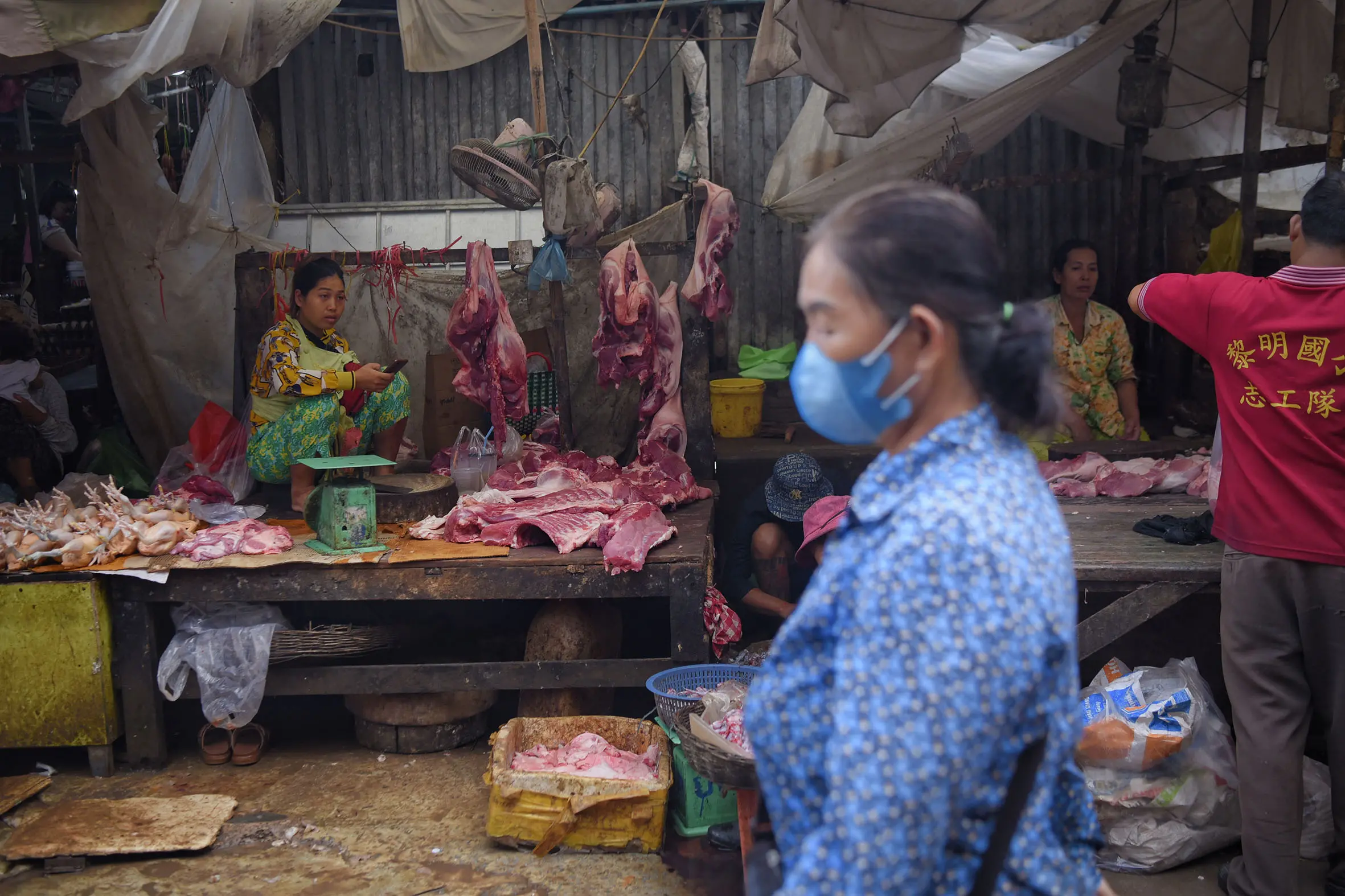
The study will take samples from bats in various parts of Cambodia to survey the viruses these mammals may host. Researchers will also study how policy could impact the access that local villagers may have to wildlife.
“For instance, if access to a cave where the bats live is restricted, we want to look at how that affects the livelihoods of the locals who conduct eco-tours there. What will these people do instead? And eventually, how does that affect the emergence of wildlife diseases? The idea is to collect input that will help us create management advice,” Mr Sinovas said.
In a post-pandemic world, understanding the complexities in human interactions with wildlife has become ever more pressing.
Silent forests and carbon losses
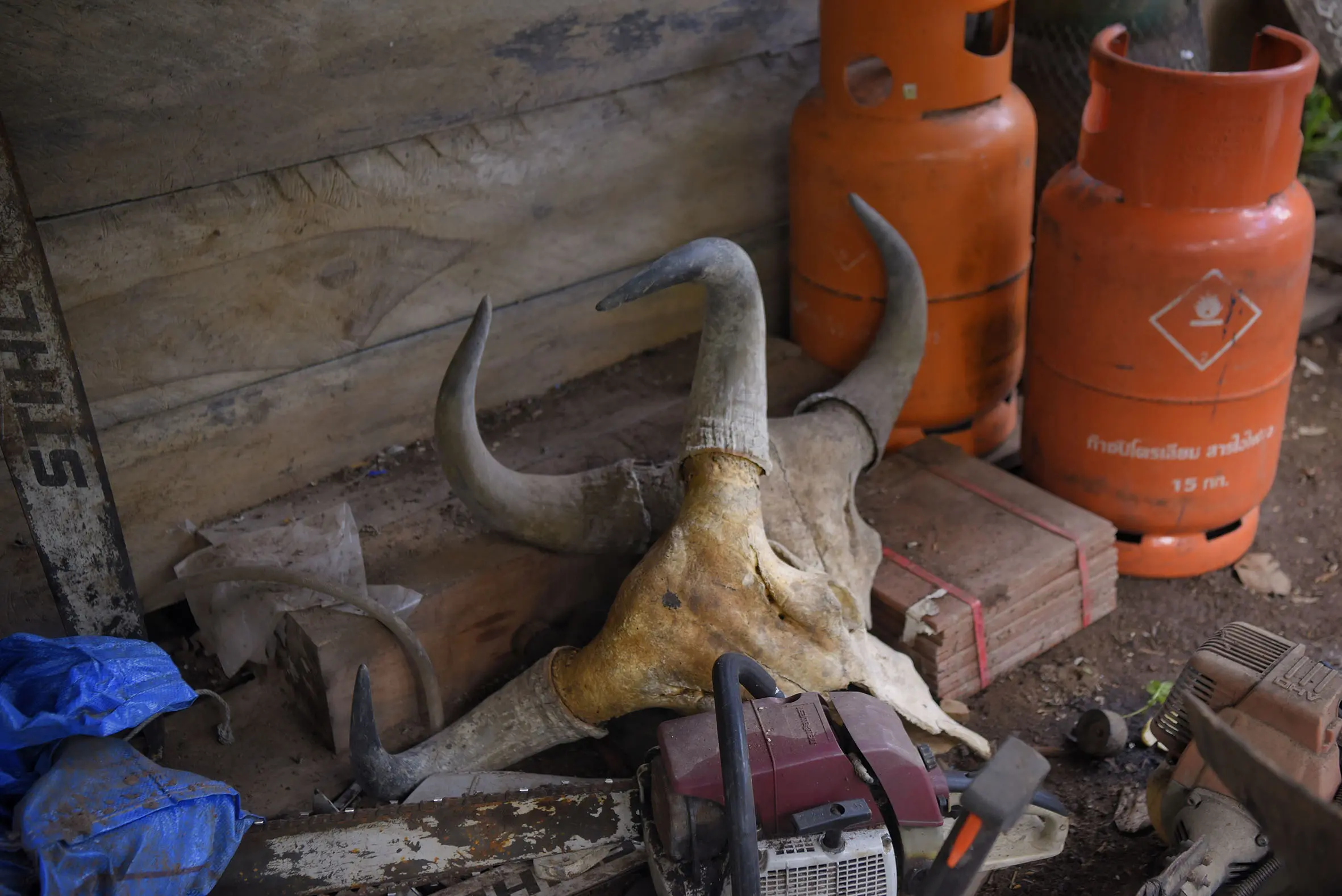
The prized horns of the banteng were still attached to the skulls we found below the stilt house of Mr Ben Davis, the founder of BeTreed Adventures, an ecotourism lodge located within the Phnom Tnout Wildlife Sanctuary in Cambodia’s Preah Vihear province.
The skulls were from two banteng — a cattle species poached to the brink of extinction for its meat and horns — that died after they were caught in snares set by poachers in the protected area.
Mr Davis, 55, who has been living in Cambodia since 1992, said snaring is not a new problem for the country. “They’ve been setting snares since I first came, but they’ve been getting more advanced,” said the American, who worked in rural development before he decided to focus on wildlife conservation by setting up BeTreed in 2012.

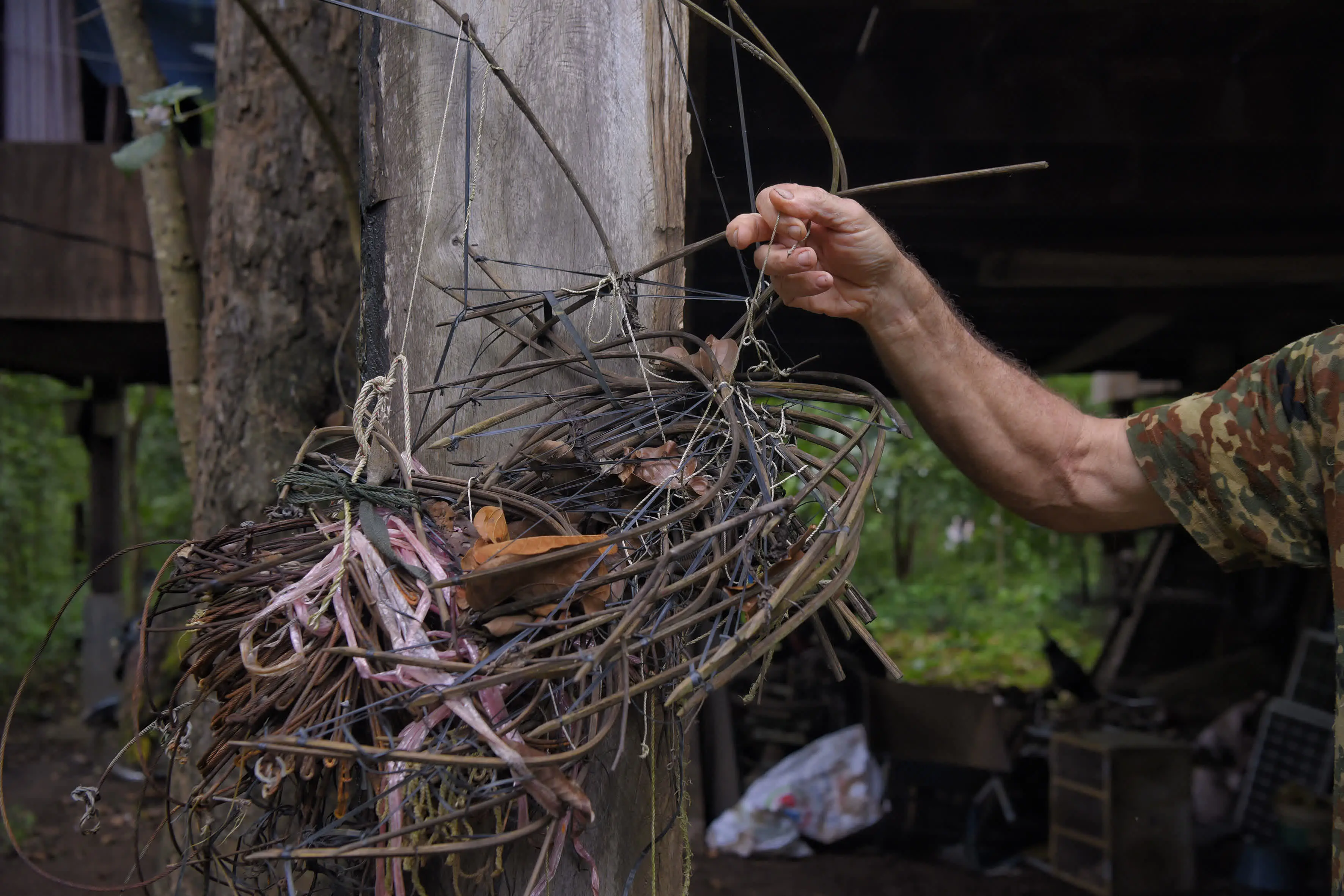
In the past, it used to take a group of men a day just to set up one trap, he said. Animals that walk into such traps were instantly killed by a falling tree or log, Mr Davis said. “Snaring was an issue then, but it wasn’t that big of a problem.”
But in the last 20 years or so, Mr Davis said the use of bike wire and twine has made it easier for snares to be deployed. We accompanied him and his rangers on a snare patrol, and found more than 10 made of twine and twig within a 100m radius of the first.
“There are more people setting snares, and they're much cheaper snares, so they set much more. Instead of one person setting five or 10 traps, like they used to do for subsistence, each one sets literally hundreds,” he added.
Large animals such as the banteng, as well as monkeys and large birds such as hornbills, are highly prized by hunters since they yield more meat for sale.
Studies have found that large animals are primary targets for hunting, particularly in areas with good transport connections to major towns where wild meat can be sold.
Yet, these animals play crucial roles in tropical forest ecosystems, and losing them could have repercussions for the health of the forest.
Assistant Professor Lim Jun Ying from the NUS’ Plant Ecology, Evolution and Biogeography Laboratory said: “Besides helping to disperse seeds, large herbivores such as elephants and tapirs also move nutrients throughout the forest when they poop. The disturbances that they create, such as through trampling or consuming plants, can shape the vegetation around the forest understorey.”
Numerous studies have attempted to model how the loss of seed-dispersing animals in tropical forests could affect the ability of a forest to store planet-warming carbon dioxide (CO2).
Through the process of photosynthesis, tropical forests take in CO2 and in the presence of sunlight convert the carbon into biomass, such as tree trunks. By locking away carbon from the atmosphere, tropical forests are a key ally in humanity’s fight to tackle the climate crisis.
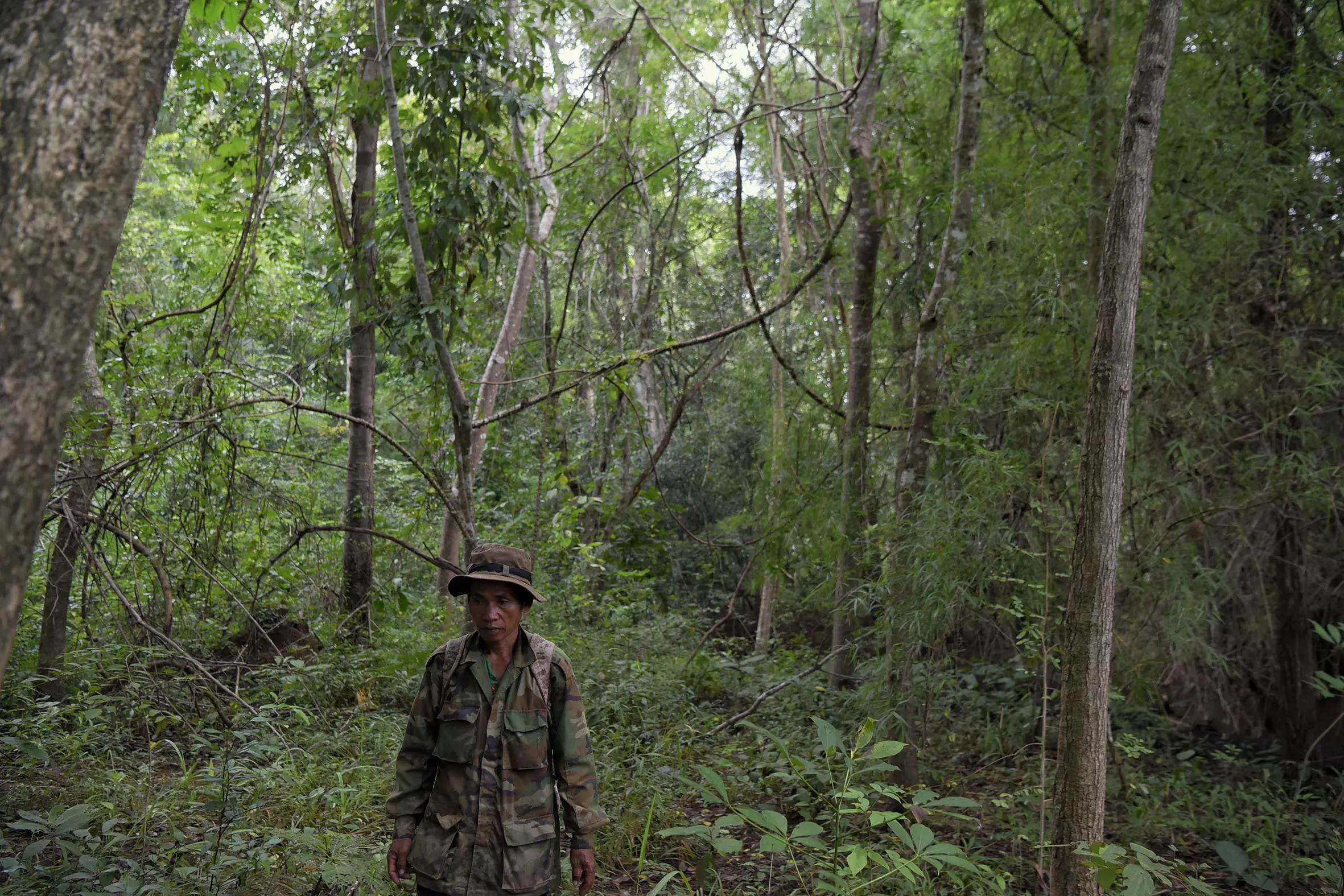
But losing animals to traps and snares could impact a forest’s ability to store carbon.
A 2019 Scientific Reports study, which had modelled how the loss of large fruit-eating animals such as hornbills and tapirs would affect a forest plot in Thailand, found that trees dependent on seed dispersal by large-bodied frugivores accounted for nearly a third of the total carbon biomass on the plot.
If the complete loss of large seed-dispersers causes such trees to be replaced by other trees whose seeds are spread in other ways, such as by wind, the forest plot would be less able to store carbon, the study found.
But the precise impact of the loss of wildlife on the carbon storage of a forest is something that needs to be studied further, he added. This is because various factors, such as the climate of the area and dominant tree species there could affect how much carbon a forest can store.
It could also take decades or centuries for the impact of the loss of wildlife to show up in forest health, he said.
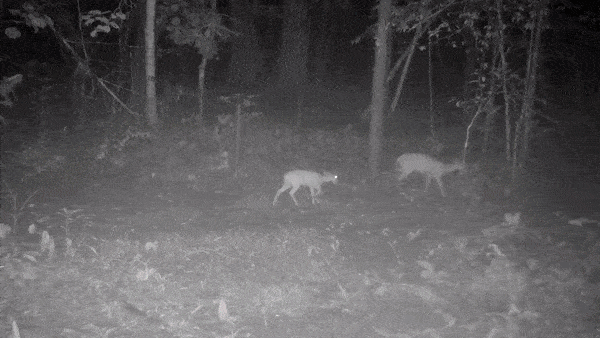
“Many studies have detected changes in tree populations at their earliest life stages, such as in terms of seed or seedling density, but it’s yet unclear how these changes will eventually play out,” he said.
Moreover, much is still unknown about forest dynamics. The seed dispersers of most plants have never been documented, deepening the mystery of how their disappearance would affect forests.
Prof Lim said his lab is starting to look into this area more closely, by analysing the differences in forest plots across South-east Asia.
Solutions
The wildlife trade, which involves multiple groups of people for whom nature holds different values and meanings, is a difficult issue to unpack.
As we learnt during our reporting trip, nature sustains many rural communities, providing free sources of protein to people already grappling with stressors such as poverty.
But when city dwellers add to the demand for bushmeat or exotic pets as symbols of wealth and prestige, demand may outstrip the rate at which the animals can replenish themselves.
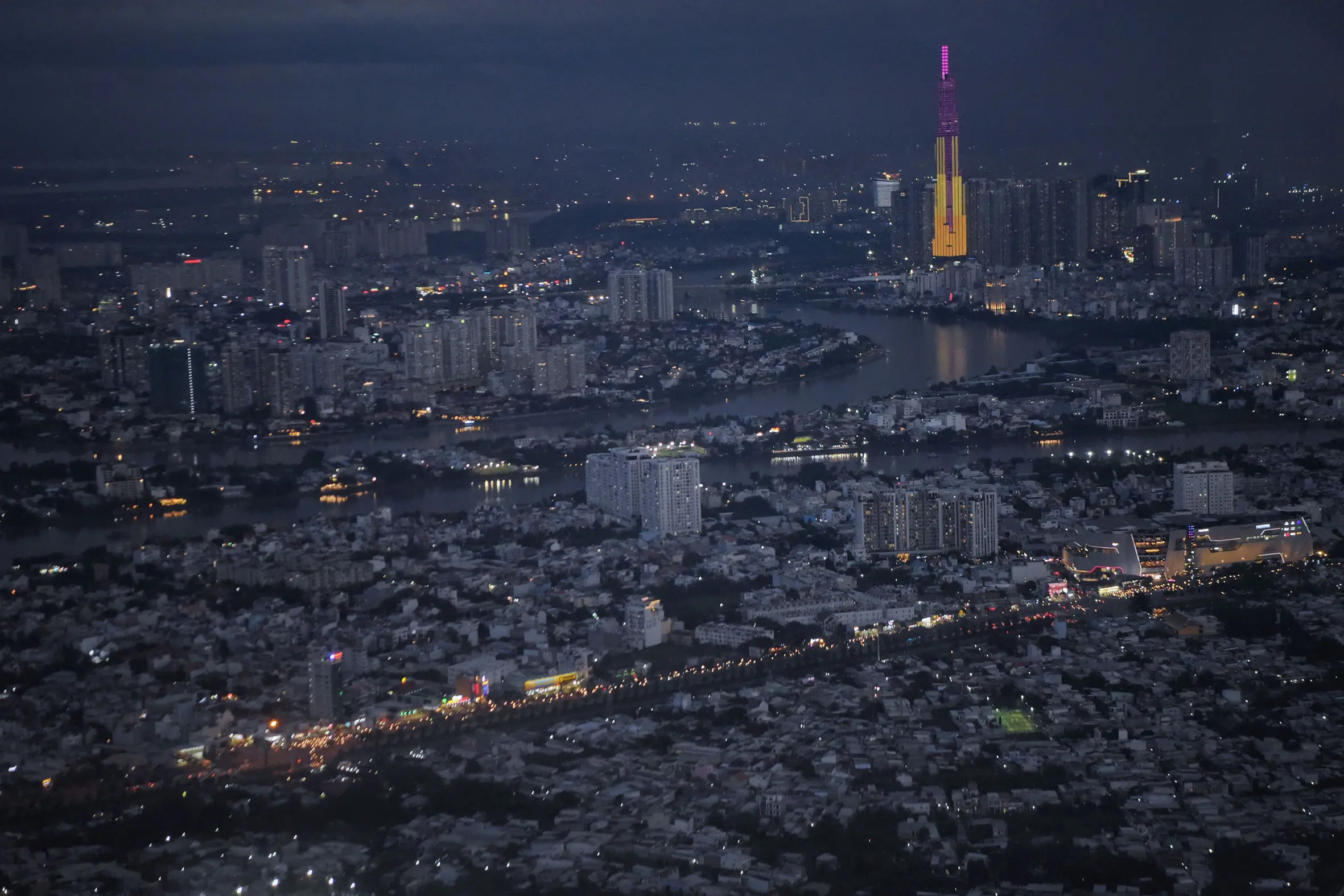
Professor Michael Christie, who specialises in ecological and environmental economics at the Aberystwyth University in Wales, said: “New technologies and access to markets may open up new opportunities for selling bushmeat, which would increase local economic returns; but may be at the expense of other ecosystem services.”
Prof Christie chaired a report published in July 2022 by the United Nations’ science advisory panel for biodiversity, The Intergovernmental Science-Policy Platform on Biodiversity and Ecosystem Services, that highlighted the myriad ways nature can be valued. The report also found that putting a narrow economic value on nature, and overlooking other non-market values associated with nature’s contribution to people, such as climate regulation, is one of the key reasons behind the loss and damage to the world’s ecosystems.
NUS’ Ms Ng also noted that motivations for hunting wildlife can be diverse even within countries, and that it was important for policymakers to work with the local communities to understand the reasons for hunting.
“If more people are engaging in snaring, I might ask what they were doing before, and what happened to motivate the switch. But if the same individuals are doing more snaring, then perhaps forest clearing forces more wildlife into smaller forest patches, making them easier to trap,” she said.
Urban consumers have the power to worsen or improve faraway landscapes, she said.
For example, most of the goats, sheep and yak grazing in the mountains of Nepal’s Himalayan region are bred for diners in cities, she said. “Livestock grazing also demands massive water resources, while reducing the landscapes' ability to store water by removing grasslands, shrubs and saplings. What we end up with is a landscape with goats but without wild birdsong,” she said.
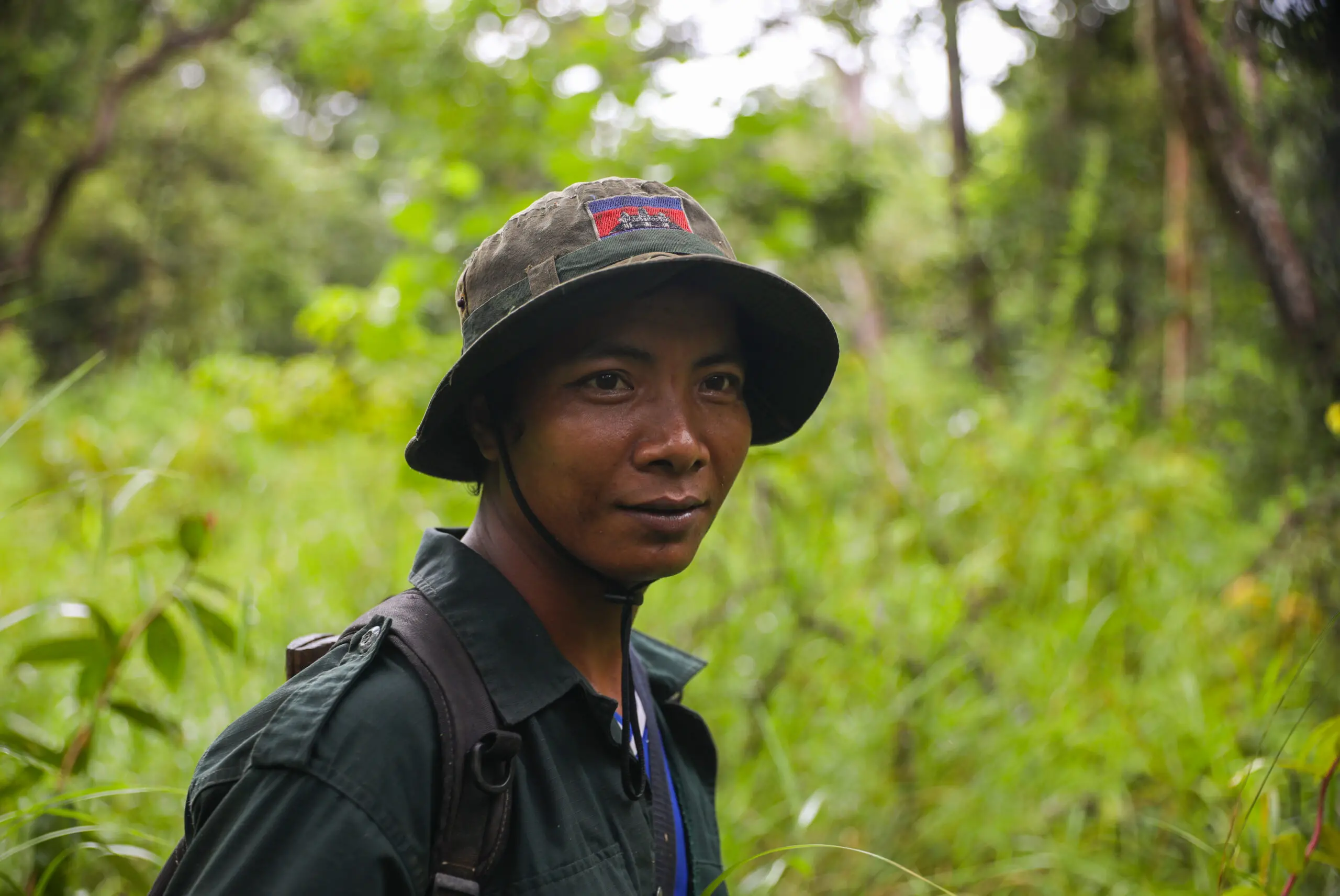
Mr Chhoun Phirum, 33, used to hunt animals and log trees in the forests of Cambodia’s Preah Vihear province. But as wildlife declined and it became more difficult to trap animals, his income became more erratic.
After he was caught by local authorities and fined for poaching, Mr Chhoun decided to switch tracks and today patrols the forest as a ranger with BeTreed Adventures. He said he has also stopped eating wild meat.
“I would feel very happy if the forest is left standing tall,” Mr Chhoun told us through our Khmer translator. Having seen the numbers of banteng increase following the daily anti-snare patrols, he added: “I think that having more wildlife is better.”
This feature was produced by The Straits Times in partnership with the Southeast Asia Globe, with support from the Pulitzer Center’s Rainforest Journalism Fund.
Mr Anton L. Delgado is a reporter with the Southeast Asia Globe.
Produced by: Anton L. Delgado, Audrey Tan, Bhavya Rawat, Lee Pei Jie, Mark Cheong
Main photographs by: Anton L. Delgado, Mark Cheong
- View this story on Southeast Asia Globe






